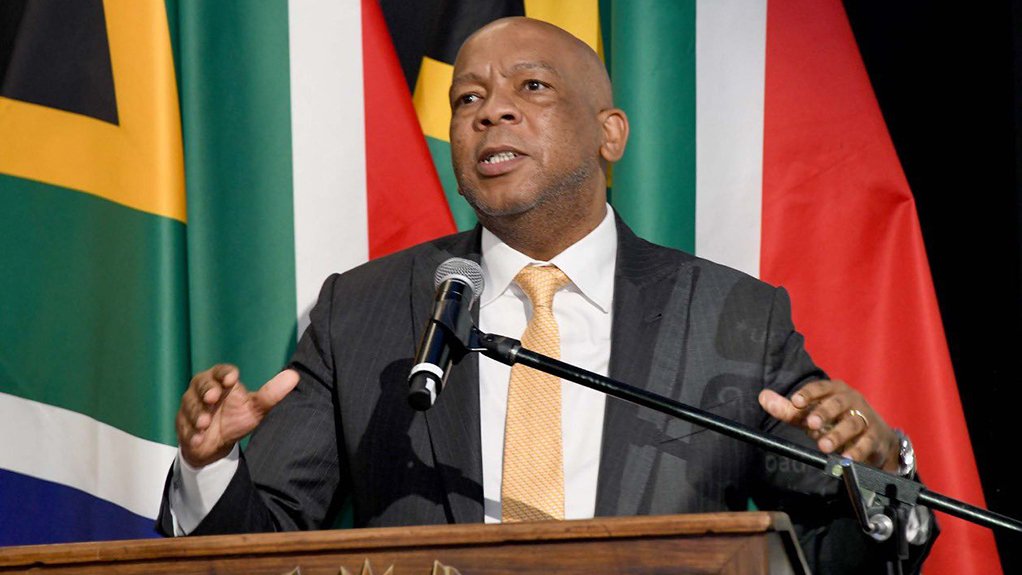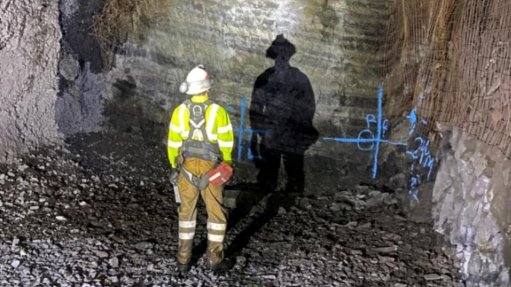As Kusile unit returns early, South Africa misses renewables procurement deadline
Electricity Minister Kgosientsho Ramokgopa has welcomed the earlier-than-expected return of Kusile Unit 3 coal-fired generation, but has also acknowledged that government simultaneously failed to meet its end of September deadline for the release of the next public procurement round for renewable energy.
Eskom confirmed on Saturday, September 30 that Kusile Unit 3 had been restarted nearly a year after it, together with units 1 and 2, became inoperable after a slurry build-up in the Unit 1 flue led to its collapse, damaging the other two flues in the west chimney they share in the process.
Unit 3 was restarted after Forestry, Fisheries and the Environment Minister Barbara Creecy and the Nkangala district municipality upheld decisions to allow for a postponement of Kusile’s compliance with minimum emission standards (MES) in relation to its sulphur dioxide emissions. The decisions, which were made days prior to the firing of Unit 3, allow the three units to be returned using temporary stacks that bypass the flue gas desulphurisation (FGD) pollution-control system.
The upholding of the postponement followed appeals lodged by groundWork and Vukani Environmental Movement, Fairacres Products, GHB Farms and Topigs Norsvin on the basis of the negative health impacts on communities and livestock in the area.
By Sunday, October 1, Unit 3 was said to be producing 550 MW and was being ramped up to its full 800 MW nameplate, 720 MW of which could be available eventually for injection into the loadshedding-prone grid.
The other units would be introduced in stages, with Unit 1 officially due for return on October 30 and Unit 2 on November 30, but Ramokgopa indicated that these deadlines may also be brought forward.
He described the return of Unit 3 as a “significant milestone” and said it was indicative that “we are now beginning to turn the corner in relation to additional capacity”.
The bypass of the FGD system was seen as a way to “strike a balance” between the needs of the economy, which was struggling to grow partly because of the ongoing power cuts, and meeting environmental and health obligations.
A Reuters report indicated that, besides Kusile, Eskom is currently failing to comply with MES at four of its 15 power stations, namely Matimba, Matla, Kendal and Kriel, with utility data from January showing that Kendal emitted an average of between 10- and 30-times the permissible limit.
Eskom head of generation Bheki Nxumalo reported that Matimba was now operating in line with standards and that actions were being taken at the other three stations, including operating them temporarily at lower load factors when they breached emission limits.
Ramokgopa acknowledged the pollution issue was likely to rise in prominence further should South Africa decide to extend the life of coal stations that are currently scheduled for retirement.
He provided no update, however, regarding the approach government was likely to take in this regard, with the National Treasury having recently received a report from a Vgbe-led consortium into the state of the power stations.
The Minister did confirm, though, that the Department of Mineral Resources and Energy and the Independent Power Producer Office had been unable to meet the September deadline for the release of Bid Window 7 of the Renewable Energy Independent Power Producer Procurement Programme.
No reason was given for the delay, with the Minister saying only that work was under way to ensure that the procurement process was launched soon and that a new release date would be provided in due course.
It is believed that the procurement may be being held back for Eskom to first publish an updated Generation Connection Capacity Assessment (GCCA), which will outline what grid capacity remains available for use and where.
Engineering News understands that the GCCA has been finalised and is undergoing internal Eskom governance processes. It is also possible that it could be released together with the utility’s new approach to curtailment, which would unlock capacity on the grid ahead of the building of new physical assets.
Article Enquiry
Email Article
Save Article
Feedback
To advertise email advertising@creamermedia.co.za or click here
Press Office
Announcements
What's On
Subscribe to improve your user experience...
Option 1 (equivalent of R125 a month):
Receive a weekly copy of Creamer Media's Engineering News & Mining Weekly magazine
(print copy for those in South Africa and e-magazine for those outside of South Africa)
Receive daily email newsletters
Access to full search results
Access archive of magazine back copies
Access to Projects in Progress
Access to ONE Research Report of your choice in PDF format
Option 2 (equivalent of R375 a month):
All benefits from Option 1
PLUS
Access to Creamer Media's Research Channel Africa for ALL Research Reports, in PDF format, on various industrial and mining sectors
including Electricity; Water; Energy Transition; Hydrogen; Roads, Rail and Ports; Coal; Gold; Platinum; Battery Metals; etc.
Already a subscriber?
Forgotten your password?
Receive weekly copy of Creamer Media's Engineering News & Mining Weekly magazine (print copy for those in South Africa and e-magazine for those outside of South Africa)
➕
Recieve daily email newsletters
➕
Access to full search results
➕
Access archive of magazine back copies
➕
Access to Projects in Progress
➕
Access to ONE Research Report of your choice in PDF format
RESEARCH CHANNEL AFRICA
R4500 (equivalent of R375 a month)
SUBSCRIBEAll benefits from Option 1
➕
Access to Creamer Media's Research Channel Africa for ALL Research Reports on various industrial and mining sectors, in PDF format, including on:
Electricity
➕
Water
➕
Energy Transition
➕
Hydrogen
➕
Roads, Rail and Ports
➕
Coal
➕
Gold
➕
Platinum
➕
Battery Metals
➕
etc.
Receive all benefits from Option 1 or Option 2 delivered to numerous people at your company
➕
Multiple User names and Passwords for simultaneous log-ins
➕
Intranet integration access to all in your organisation



















